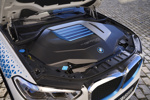Fleet managers could save thousands of pounds in bodywork repair bills just by implementing a simple pre-assessment process for accident damage. I estimate that at least £9.4 million a year and several months of vehicle downtime is wasted within the fleet management industry by sending cars with minor cosmetic damage to bodyshops for repair when the job could be done for half the price – and far quicker.
It’s time to take a fresh look at smart repair. Standards have been driven up significantly since the introduction of the cosmetic smart repair ATA (Automotive Technician Accreditation) in 2012. Today’s technicians are highly skilled and smart repair offers a quality, cost-effective and time-efficient way to repair single panel bodywork damage and alloy wheel scuffs at the location of your choice.
On average, a smart repair will cost about 50% less than the bodyshop and the car is off the road for just a few hours compared to several days. While the actual repair itself probably takes the same time, whether it is done by a mobile smart repairer or the bodyshop, we all know that cars sit around in a queue at the bodyshop waiting to be fixed.
We’re seeing a rise in business from fleet managers and fleet management companies. For field based company car drivers with minor damage the advantages are significant: the repairer can go straight to the employee’s home.
Pre-assessment couldn’t be simpler. To start seeing significant savings when a driver reports vehicle damage fleet managers should evaluate the situation applying the following criteria to decide which repair route is the most appropriate and cost effective.
If there are scuffs or scrapes to a single panel, bumpers, wheel arches or alloy wheels, choose mobile smart repair. Vandal scratches are also suitable for this method.
For major crash damage requiring reshaping or panel beating and multi-panel damage, choose the bodyshop route as this type of repair is outside the scope of smart repairers.
This pre-assessment procedure should deliver almost immediate results in terms of spend, vehicle downtime and keeping drivers on the road.
















Login to comment
Comments
No comments have been made yet.